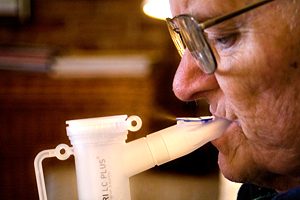
Over the past decade, how patients receive their care in clinics has been transforming, from traditional primary care to patient-centered medical homes. These “homes” focus on team-based, coordinated, and whole-person care instead of short-term, episodic, or fragmented care seen earlier in primary care. While research has shown patient-centered medical homes can lead to improved care, School of Public Health researchers set out to study why that might be the case.
“Although we can look for whether changes to clinics are responsible for better outcomes, we need to know how those improvements might happen,” says the study’s lead author, Assistant Professor Nathan Shippee.
The study, “Assessing Medical Home Mechanisms: Certification, Asthma Education, and Outcomes,” was recently published in The American Journal of Managed Care

Using data provided by MN Community Measurement, the study looked at how being certified as a patient-centered medical home by the state of Minnesota — part of the state’s Health Care Home initiative — helped patients get better asthma care, compared to other primary care clinics.
“With asthma care, we had measures that allowed us to break down the quality of care into different pieces and test the relationship between clinic organization, care management and patient education, and health outcomes,” says Shippee. “This helps us understand how — and not just whether — we might obtain better outcomes in Health Care Home clinics.”
The study shows that Health Care Homes had better asthma outcomes than other primary care clinics, and that asthma care management (patient education with an asthma action plan) made up a sizable piece of that. The study found that better rates of asthma education with an action plan made up 16- to 35-percent of the total Health Care Home clinics’ benefit for asthma health outcomes. However, most of the benefit of Health Care Homes was due to other factors.
This study was conducted with support from the Minnesota Department of Health and with assistance from MN Community Measurement.
* This post was derived from a University Relations Research Brief
